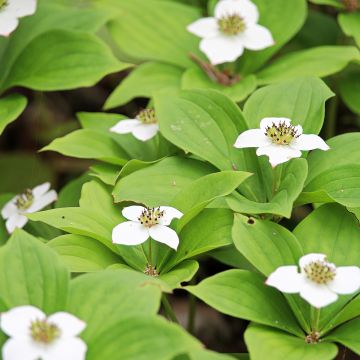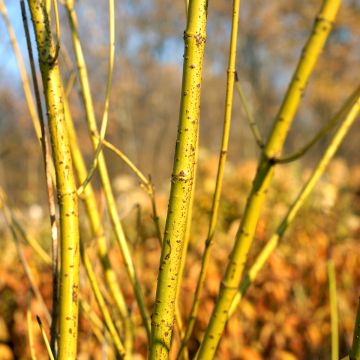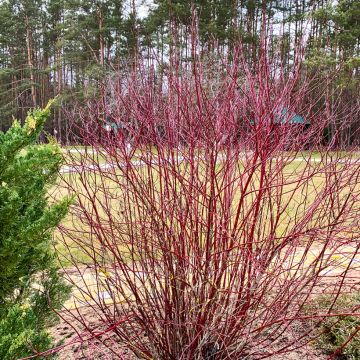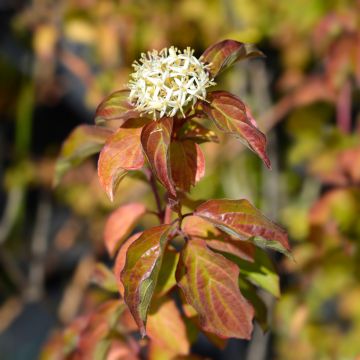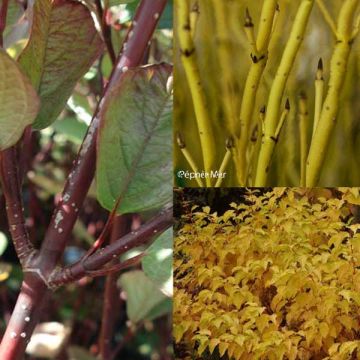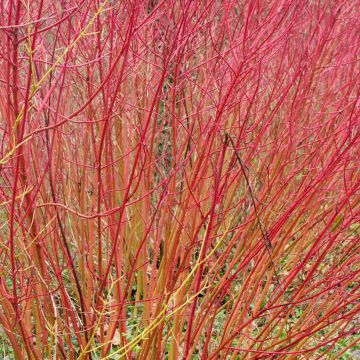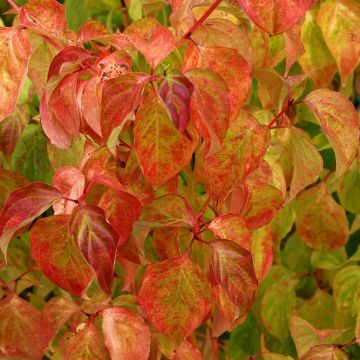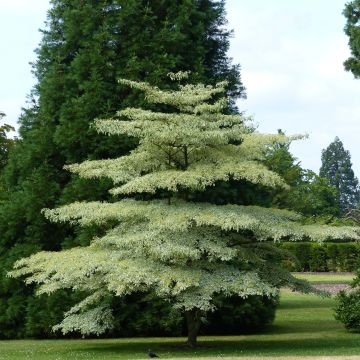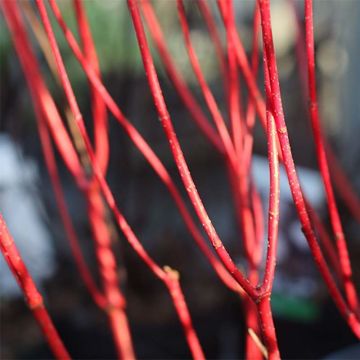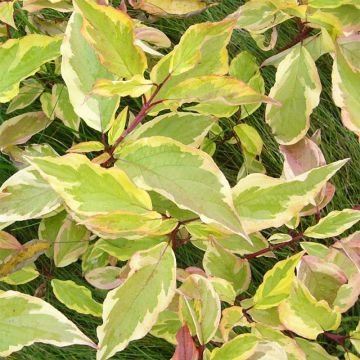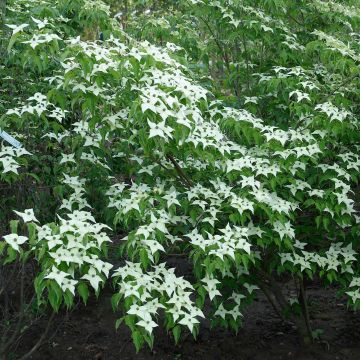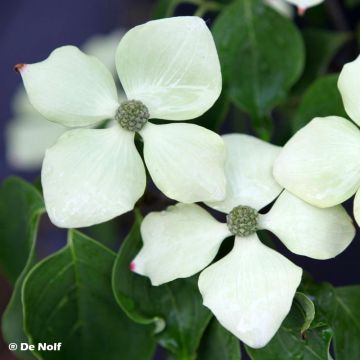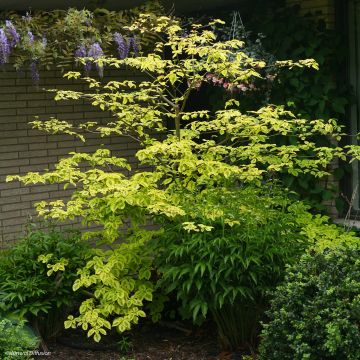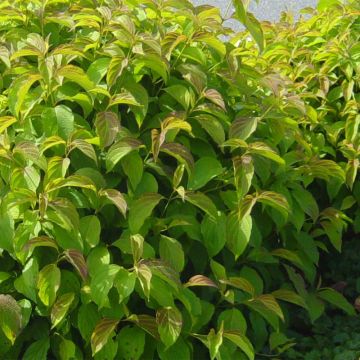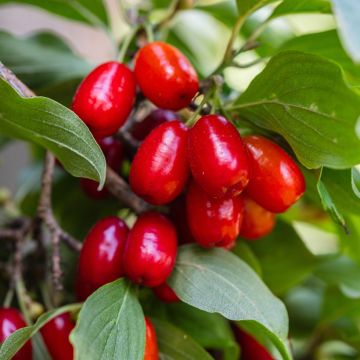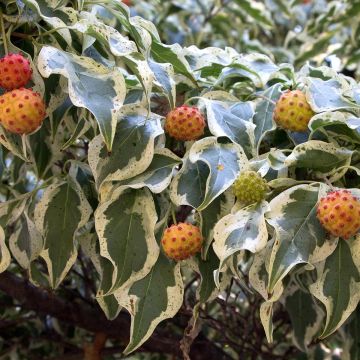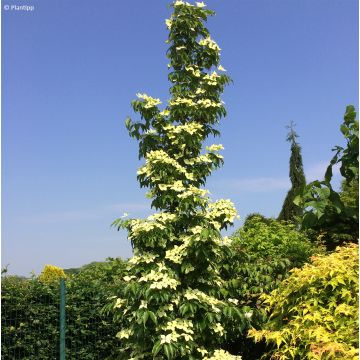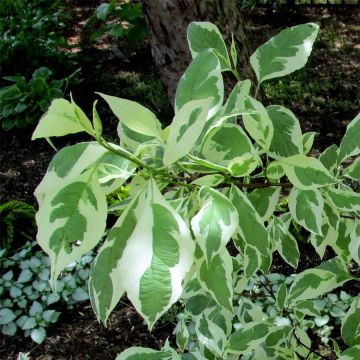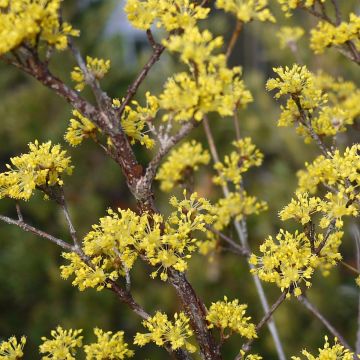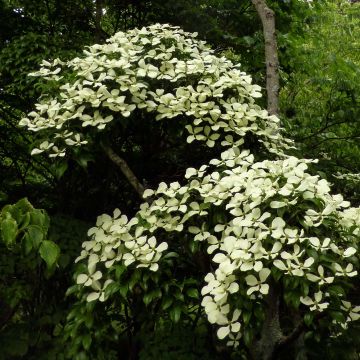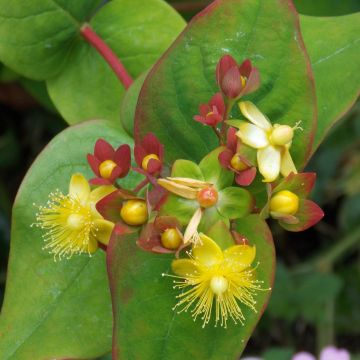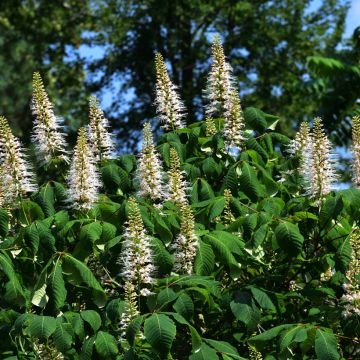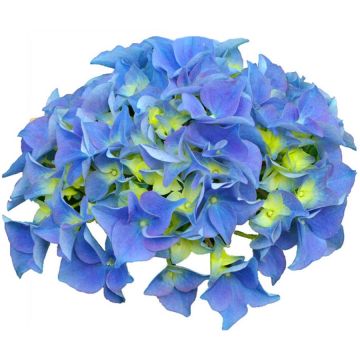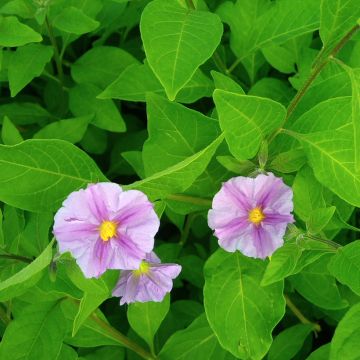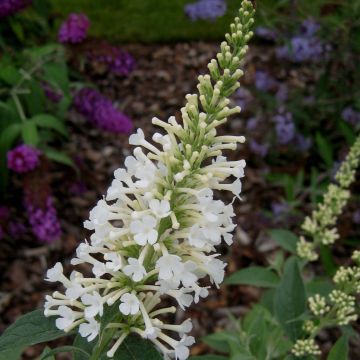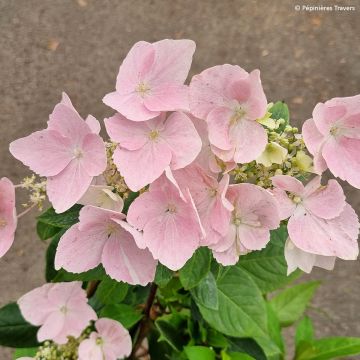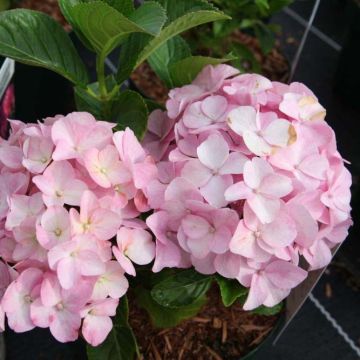

Cornus controversa Candlelight - Giant Dogwood


Cornus controversa Candlelight - Giant Dogwood
Cornus controversa Candlelight - Giant Dogwood
Cornus controversa Candlelight
Giant Dogwood, Wedding Cake Tree
Why not try an alternative variety in stock?
View all →This plant carries a 24 months recovery warranty
More information
We guarantee the quality of our plants for a full growing cycle, and will replace at our expense any plant that fails to recover under normal climatic and planting conditions.
From €5.90 for pickup delivery and €6.90 for home delivery
Express home delivery from €8.90.
Does this plant fit my garden?
Set up your Plantfit profile →
Description
The Cornus controversa Candlelight is a variety of Pagoda Dogwood whose foliage colour changes throughout the year. Its silhouette of layered branches, particularly architectural, starts the season in golden tones, gradually transitioning to light green, and finishes in autumn with an explosion of red and orange hues that are truly stunning. In late spring, the shrub is covered in flat inflorescences of white flowers, followed by decorative blue-black fruits in August. Deciduous, it loses its foliage at the beginning of winter, allowing for the appreciation of its characteristic branches.
The Dogwood belongs to the small family of Cornaceae, which, after several revisions in botanical classification, now only includes the genera Cornus and Alangium. There are several dozen species of Dogwoods, most of which are shrubs, but some, like Cornus nuttallii and Cornus kousa, form small trees. This is also the case with Cornus controversa, native to China, Korea, and Japan, where it can reach heights of up to 12 metres. It has a straight trunk and a vegetation of horizontal layers, evoking the distinctive architecture of pagodas in the Far East, from which it derives its common name.
Candlelight, which can be translated as "candlelight," is a horticultural variety easily recognisable by its young golden foliage. In spring, bright shoots appear on the branches, standing upright like lit candles, through which the sun loves to play. The analogy is reinforced by the shrub's tabular habit, which naturally forms well-stacked layers of vegetation, mimicking a giant chandelier found in certain castles. It forms a large shrub or small tree with a single trunk, reaching a height of 4 metres in 10 years and the same width, and at maturity, it can exceed 6 metres. Carried by flexible petioles, the ovate acuminate leaves (with a sharply narrowed tip) change from yellow to light green during the season, while inflorescences appear in June. Small cream-white flowers, grouped in 10 cm diameter cymes, then develop above the foliage, creating a pleasant scene in the garden. They later evolve into small spherical fruits, initially green, which then turn blue-black starting in August, providing a new ornamental interest to the plant.
Autumn is another ornamental highlight in the plant's cycle, as it accumulates colourful pigments in its leaves due to the first cold weather. The leaves then create a symphony of red and orange, even purple, that catches the eye in the garden at a time when flowering is scarce.
This golden-foliaged Pagoda Dogwood will be perfect in a shaded area of the garden, illuminating it with its bright foliage. Create an exceptional scene by planting the Sambucus nigra Straight Lace next to it, an elderberry with a similarly architectural habit, forming a dark purple, almost black, column with light and extremely dissected foliage. Its spring pink blooms in large corymbs are particularly highlighted by the dark vegetation, which contrasts strongly with the golden yellow of your Dogwood. Another exceptional foliage is that of the Mahonia Volcano, a small shrub 1.50 metres in height that you can plant at the base of Candlelight. Evergreen, its highly dissected foliage possesses the elegance of the most beautiful ferns, and from August to October, it graces you with splendid yellow blooms in the form of bouquets of spikes emerging like will-o'-the-wisps above the dark green foliage. And to extend the flowering period of your flowerbed into spring, while staying within the theme of astonishing foliage, indulge in the Cercis canadensis The Rising Sun, an Eastern Redbud whose pink flowers appear as early as April on the wood, before the large almost-round leaves, whose geometry will contrast nicely with the dissected foliage of the others. As for their colour, it constantly changes from their appearance to autumn, where they turn orange-red.
Report an error about the product description
Plant habit
Flowering
Foliage
Botanical data
Cornus
controversa
Candlelight
Cornaceae
Giant Dogwood, Wedding Cake Tree
Cultivar or hybrid
Other Cornus
Planting and care
Easy to grow, this Cornus controversa Candlelight requires little maintenance, pruning is unnecessary as it naturally takes on its distinctive habit. It prefers a fresh, humus-bearing soil, not too chalky, slightly acidic, and above all, not drying out. Plant it in a sunny location only in less sunny climates, elsewhere choose a semi-shaded spot to protect it from the burning rays of too bright a sun. Shade will also enhance the brightness of the young foliage. Dig a hole 50 or 60 cm in size and depth, and if your soil is slightly chalky, mix acidic pH planting compost (based on turf) with the existing soil, as well as compost or leaf compost. The same advice applies to sandy soil, water retention must be increased. In this case, dig a larger planting hole and incorporate a large amount of compost. If the soil is already neutral or acidic, a slight addition of compost and manure will be sufficient for planting. For maintenance, regularly apply fertiliser as this Dogwood is a bit greedy, and also use pine bark as mulch to maintain acidity in alkaline soils. Very hardy, resistant to -20°C, it requires little maintenance, except for watering during hot periods.
Planting period
Intended location
Care
This item has not been reviewed yet - be the first to leave a review about it.
Summer-flowering shrubs
Haven't found what you were looking for?
Hardiness is the lowest winter temperature a plant can endure without suffering serious damage or even dying. However, hardiness is affected by location (a sheltered area, such as a patio), protection (winter cover) and soil type (hardiness is improved by well-drained soil).

Photo Sharing Terms & Conditions
In order to encourage gardeners to interact and share their experiences, Promesse de fleurs offers various media enabling content to be uploaded onto its Site - in particular via the ‘Photo sharing’ module.
The User agrees to refrain from:
- Posting any content that is illegal, prejudicial, insulting, racist, inciteful to hatred, revisionist, contrary to public decency, that infringes on privacy or on the privacy rights of third parties, in particular the publicity rights of persons and goods, intellectual property rights, or the right to privacy.
- Submitting content on behalf of a third party;
- Impersonate the identity of a third party and/or publish any personal information about a third party;
In general, the User undertakes to refrain from any unethical behaviour.
All Content (in particular text, comments, files, images, photos, videos, creative works, etc.), which may be subject to property or intellectual property rights, image or other private rights, shall remain the property of the User, subject to the limited rights granted by the terms of the licence granted by Promesse de fleurs as stated below. Users are at liberty to publish or not to publish such Content on the Site, notably via the ‘Photo Sharing’ facility, and accept that this Content shall be made public and freely accessible, notably on the Internet.
Users further acknowledge, undertake to have ,and guarantee that they hold all necessary rights and permissions to publish such material on the Site, in particular with regard to the legislation in force pertaining to any privacy, property, intellectual property, image, or contractual rights, or rights of any other nature. By publishing such Content on the Site, Users acknowledge accepting full liability as publishers of the Content within the meaning of the law, and grant Promesse de fleurs, free of charge, an inclusive, worldwide licence for the said Content for the entire duration of its publication, including all reproduction, representation, up/downloading, displaying, performing, transmission, and storage rights.
Users also grant permission for their name to be linked to the Content and accept that this link may not always be made available.
By engaging in posting material, Users consent to their Content becoming automatically accessible on the Internet, in particular on other sites and/or blogs and/or web pages of the Promesse de fleurs site, including in particular social pages and the Promesse de fleurs catalogue.
Users may secure the removal of entrusted content free of charge by issuing a simple request via our contact form.
The flowering period indicated on our website applies to countries and regions located in USDA zone 8 (France, the United Kingdom, Ireland, the Netherlands, etc.)
It will vary according to where you live:
- In zones 9 to 10 (Italy, Spain, Greece, etc.), flowering will occur about 2 to 4 weeks earlier.
- In zones 6 to 7 (Germany, Poland, Slovenia, and lower mountainous regions), flowering will be delayed by 2 to 3 weeks.
- In zone 5 (Central Europe, Scandinavia), blooming will be delayed by 3 to 5 weeks.
In temperate climates, pruning of spring-flowering shrubs (forsythia, spireas, etc.) should be done just after flowering.
Pruning of summer-flowering shrubs (Indian Lilac, Perovskia, etc.) can be done in winter or spring.
In cold regions as well as with frost-sensitive plants, avoid pruning too early when severe frosts may still occur.
The planting period indicated on our website applies to countries and regions located in USDA zone 8 (France, United Kingdom, Ireland, Netherlands).
It will vary according to where you live:
- In Mediterranean zones (Marseille, Madrid, Milan, etc.), autumn and winter are the best planting periods.
- In continental zones (Strasbourg, Munich, Vienna, etc.), delay planting by 2 to 3 weeks in spring and bring it forward by 2 to 4 weeks in autumn.
- In mountainous regions (the Alps, Pyrenees, Carpathians, etc.), it is best to plant in late spring (May-June) or late summer (August-September).
The harvesting period indicated on our website applies to countries and regions in USDA zone 8 (France, England, Ireland, the Netherlands).
In colder areas (Scandinavia, Poland, Austria...) fruit and vegetable harvests are likely to be delayed by 3-4 weeks.
In warmer areas (Italy, Spain, Greece, etc.), harvesting will probably take place earlier, depending on weather conditions.
The sowing periods indicated on our website apply to countries and regions within USDA Zone 8 (France, UK, Ireland, Netherlands).
In colder areas (Scandinavia, Poland, Austria...), delay any outdoor sowing by 3-4 weeks, or sow under glass.
In warmer climes (Italy, Spain, Greece, etc.), bring outdoor sowing forward by a few weeks.

































